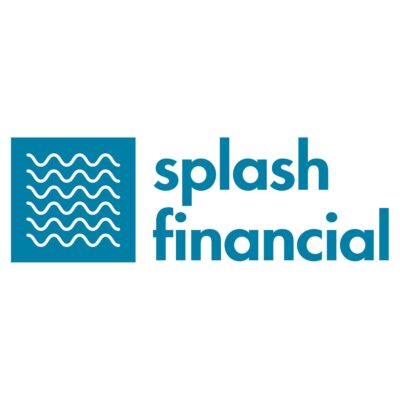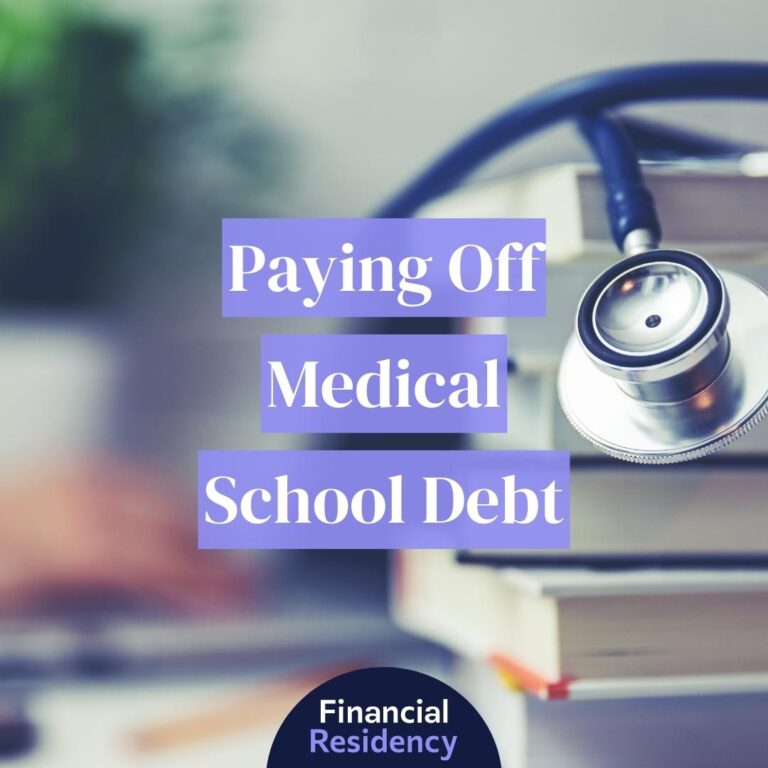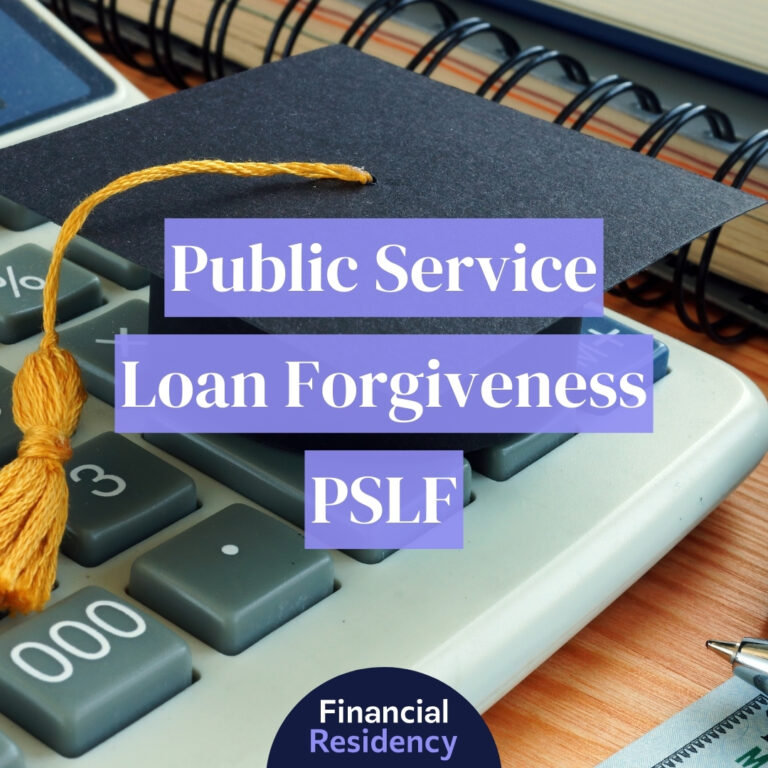Medical school graduates owe up to seven times more than the typical college student. Refinancing medical school student loans can help stressed and burnt-out physicians lower their monthly payments, extend their loan term, secure a lower interest rate, and even earn a cash bonus.
With that said, refinancing medical student loans isn’t the best option for everyone.
We’ve rounded up the best companies for refinancing medical student loans and provided info to help you take charge of your student debt, understand your current loan, and make a prudent decision that aligns with your financial goals.
6 Best Companies for Refinancing Medical School Student Loans
We’ve combed the internet to vet and compare the best companies for refinancing medical student loans.
The lenders below have positive consumer reputations, work with a range of credit scores, and provide refinancing options to borrowers across the country.
1. Credible
- BBB Grade: A+
- Open to residents? Yes
- Minimum Credit Score: 650
- Variable APR: 5.28% – 12.41% APR
- Fixed APR: 5.48% – 10.98% APR
Credible is an excellent choice if you’re looking to compare rates from multiple lenders at once. It’s a leading comparison platform for insurance products and loans, including medical school loans.
Credible partners with the following lenders who provide specialized medical school loan refinancing, including:
- Citizens
- EDvestinU
- ELFI
- INvestEd
- LendKey
- MEFA
- RISLA
Credible’s partners don’t charge service fees, origination fees, or prepayment penalties.
Credible lets you check your rates without running a hard credit check, giving you a quick overview of multiple loan options.
Like its competitors, Credible has flexible repayments while you’re in school, so you can enjoy reduced payments as you complete your training.
2. Splash Financial
- BBB Grade: A+
- Open to residents? Yes
- Minimum Credit Score: 670
- Variable APR: 6.39% – 9.84%
- Fixed APR: 6.39% – 9.84%
Splash Financial has been around since 2013. It’s another highly-rated online platform with tailored refinancing options for physicians.
Rather than issuing its own loans, Splash Financial is a comparison site that matches applicants to loans from partner banks, credit unions, and lenders.
The company doesn’t charge an application or origination fee, and there are no penalties for paying off your consolidation loan early.
You can sign up for an account and check your rates in a couple of minutes without impacting your credit score.
Splash Financial provides refinanced loans for residents and fellows as well.
If you don’t feel like comparing quotes independently but want to ensure you’re getting the lowest rates possible, Splash Financial could be worth trying.
Just note that your loan’s terms and features may vary depending on which lender originates your new loan.
3. Earnest
- BBB Grade: A+
- Open to residents? Yes
- Minimum Credit Score: 680
- Variable APR: 5.66% – 8.94%
- Fixed APR: 4.96% – 8.99%
Earnest is one of the most flexible lenders to refinance medical student loans with.
You can customize the term length and payment amounts for your loan and skip one payment every year without incurring any penalties. It’s also fee-free—there are no origination fees, late payment fees, or disbursement fees.
Earnest additionally offers a 9-month grace period after graduation, which is longer than most lenders’ 6-month period.
With a rate match guarantee, you can expect some of the lowest refinancing rates in the industry if you decide to consolidate with Earnest.
4. Laurel Road
- BBB Grade: A+
- Open to residents? Yes
- Minimum Credit Score: 660
- Variable APR: 4.74% – 7.65%
- Fixed APR: 4.49% – 7.75%
Laurel Road is a popular online lender that specializes in loans for healthcare workers.
The lender offers special reduced rates to eligible doctors and physician assistants. You can secure even lower rates by opening a Laurel Road checking account, which comes with a sign-up bonus of up to $300.
You can also chip away at your refinanced student loan balance with a cashback card, which earns 2% cashback toward student loans with every purchase.
Laurel Road’s student loans extend to residents and fellows. As soon as you match, you can refinance and pay as little as $100 per month for the duration of your residency or fellowship.
5. SoFi
- BBB Grade: A+
- Open to residents? Yes
- Minimum Credit Score: 650
- Variable APR*: 5.24%-9.99%
- Fixed APR*: 4.24%-9.99%
SoFi is one of the most popular online lenders, and its student loan refinancing solutions for doctors stand out among its products.
Similar to Laurel Road, SoFi offers reduced $100 monthly payments throughout your residency. This benefit lasts up to seven years, and you can apply as soon as you’re matched to a program.
SoFi’s refinanced loans are also customizable. You can choose between a 5, 7, 10,15, and 20-year term and access variable and fixed rates.
Doctors can also enjoy a generous referral bonus. When you refer other physicians, residents, or dentists, and they refinance, you’ll earn $1,000 for each individual referral.
*SoFi may offer auto payment discounts to qualified borrowers.
6. ISL Education Lending
- BBB Grade: N/A
- Open to residents? Yes
- Minimum Credit Score: 670
- Variable APR: N/A
- Fixed APR: 6.94%–11.83%
While it might be less recognizable than some of the big-name lenders in this review, ISL (Iowa Student Loan) Education Lending has more than 40 years of experience under its belt.
Unique from the other lenders featured here, ISL Education Lending is a nonprofit that offers a range of student loans, refinanced loans, and resources to help people pay for college.
ISL Education Lending doesn’t charge late fees, early repayment fees, or origination fees.
You can choose from five different repayment terms and refinance up to $400,000 of student loans. However, ISL only offers fixed-rate loans.
If you refinance at least $60,000 of student debt, you’ll earn a $500 cash bonus.
Learn More at IowaStudentLoan.org
Glossary of Student Loan Refinancing
Here are some need-to-know definitions that can help you make an informed decision as you consider refinancing your medical school loans.
- Capitalized interest: Unpaid interest is added to the principal loan balance; often happens when a loan enters default or consolidates
- Cosigner: Individuals who don’t meet the qualifying terms for a loan can have another person apply for the loan with them
- Consolidation: Refinancing student loans can allow you to reduce multiple loans into one convenient monthly payment
- Debt-to-income ratio: Financial institutions use a formula to calculate how much of your monthly income goes to paying down debts before approving a loan
- Default: After a number of payments aren’t made on time, a lender can request the entire loan balance to be paid immediately, instead of the previously agreed-upon monthly payments. This process happens when a loan is in default.
- Deferment: Federal student loan payments can be delayed if you’re unemployed or enrolled in school
- Disbursement: Funds from other loans can be used to pay down old student loans; when this happens, it’s called disbursement
- Discharge: Occurs when student loan debt is canceled
- Federal student loans: Provided by the U.S. Department of Education, often at a higher interest rate than private loans
- Forbearance: A period of time where monthly payments aren’t required, but loans continue to accrue interest
- Grace period: A period of time immediately following graduation where monthly payments are not yet required
- Interest rate: This can be fixed or variable over the loan term; this rate is a previously agreed-upon percentage of your total loan amount that you’ll be required to pay in addition to the original loan balance
- Loan forgiveness: Some loan forgiveness programs will forgive student loans for qualifying applicants after at least 120 monthly payments and a career in certain public service professions
- Principal balance: The amount originally borrowed from the lender before fees and interest
- Private student loans: Financed by a bank or credit union, instead of the U.S. Department of Education; typically not available for student loan forgiveness
- Servicer: A company or financial institution responsible for processing payments and providing customer service
- Student loan refinancing: A process of taking out a new private loan to pay off private and/or federal student loans
How Much Student Debt Do Doctors Have?
More than 70% of physicians have medical school debt and as many as 40% also have undergraduate student loans.
The average medical school debt is more than $202,450; undergraduate debt adds an average of $48,000 to this sum. These figures don’t include the significant credit card debt many students have to take on to keep up with their living costs throughout med school.
Medical residents’ salaries vary tremendously based on their specialty, program, and geographic location, but the nationwide average sits at about $80,000 annually or $38 per hour.
The average student loan payment falls between $200 and $300 per month, but this number can vary significantly depending on the loan amount, repayment plan, and interest rate.
Even at this payment amount, it can be difficult to make a dent in the principal loan balance when interest continues to grow.
Can You Refinance Medical School Loans?
Yes, you can refinance medical school loans. There are hundreds of options and dozens of providers, so it’s important to understand your unique situation and your big-picture financial goals.
Many med school students take out a mixture of federal and private loans. Let’s assume the average interest rate of your loans is 6% and you have a 10-year payment term (the standard for standard repayment plans).
If you refinanced the $194,000 into one loan, with a new fixed rate of 3.89% for 10 years, you would save around $24,00 in interest over 10 years. Now granted, these are only averages but the potential to save is there.
One of the best ways to see your potential savings is to use a refinance calculator for your loans.
Can You Refinance Student Loans While in Medical School?
Yes, you can refinance student loans while you’re in medical school, residency, or later in your career. It can be helpful to meet with a financial advisor you trust while thoughtfully examining your credit history, loan types, and desired outcomes.
Many companies will allow you to see if you qualify without pulling a hard credit check, so it won’t affect your credit score to shop around. However, it’s also important to note that individual lenders reserve the right to reject residents because it can be a riskier loan.
If you’re interested in refinancing medical student loans while you’re still in training, you’ll need to confirm the lender will work with your income, employment status, and income.
The Basics Of Refinancing
Refinancing, in simple terms, is when you replace a current debt (such as student loan debt) with a new loan that has its own conditions, loan terms, monthly payments, and interest rates.
When borrowers refinance a loan, it’s typically in service of a financial goal.
Your goal could be to replace the loan with one that has a lower interest rate. A lower interest rate results in paying less over the loan term. Lower interest rates could potentially allow you to pay off the loan sooner.
Or your goal could be to restructure your loan with a fixed rate after years of variable interest, also referred to as variable APR.
Perhaps you don’t like the uncertainty of knowing exactly what your monthly payment will be and you’d like to count on your interest rate staying the same until you pay off the loan.
You may also be looking to adjust your repayment plan to accommodate a lower monthly payment.
If you have multiple loans, you could choose to refinance some (or all) of the loans into one loan. Not only could this save money with a lower interest rate, but you will also have the convenience of one monthly payment.
Consolidation vs Refinancing
When you research student loans, you will see consolidation and refinancing used interchangeably. But these are two very different terms when it comes to medical school debt.
Consolidation
Refinancing is distinctly different from consolidation in that refinancing is offered by private lenders, whereas student loan consolidation is a specific type of program for federal student loans.
Consolidation generally refers to the program offered for federal loans only, which is known as a Direct Consolidation Loan.
The Direct Consolidation Loan allows you to consolidate all of your eligible federal student loans into one payment. The interest rate will be the weighted average of the interest rate of all the loans, rounded up to the nearest one-eighth percent.
A Direct Consolidation Loan offers federal student loan holders two advantages. The first is a singular monthly payment, instead of having to worry about making multiple different payments.
Second, if you are working towards loan forgiveness through PSLF, then a Direct Consolidated Loan will qualify and count towards loan forgiveness.
Refinancing
Unlike consolidation, you can refinance both private and federal loans. The Department of Education is not involved in the process of refinancing federal loans but you will find plenty of banks and credit unions offering refinance options.
Refinancing has numerous benefits. The lower interest rate from refinancing can save you thousands throughout repayment and allow you to pay your debt off sooner.
But before you refinance your loans, you have to review each of your loans to determine if it makes sense to refinance.
Evaluate whether or not you want to refinance your federal student loans. Currently, the interest rates for federal loans are ranging from 5-7%, depending on which exact loan you have.
If you have a decent credit score and meet the income requirements, then you could potentially qualify for a much lower interest rate with a refinance.
What Are the Risks of Refinancing Medical Student Loans?
There are a few notable risks you’ll want to consider before refinancing student loans.
First and foremost, the risk of refinancing student loans is you may not always be approved for the program that would benefit you the most.
The downside to refinancing your federal loans is the loans will no longer be eligible for an income-driven repayment plan or loan forgiveness through the PSLF program.
You may decide these consequences are suitable for your situation though. If you’re trying to pay off your federal loans sooner or choose not to work in a public setting for the first 10 years of your career, then a refinance could be a good option for you.
However, refinancing federal student loans will also force borrowers to sacrifice federal benefits, such as forbearance and deferment.
All federal student loans issued after July 2006 have a fixed rate of interest. Refinancing federal student loans with a private lender can introduce a variable interest rate into the equation, which could increase your monthly payments.
It could make sense to refinance private student loans if you can find a lower interest rate or you can move to a fixed interest rate. Since your private loans don’t qualify for an income-driven repayment plan or the PSLF, you don’t have to worry about missing out on future benefits when you refinance
Will Medical Student Loans be Forgiven?
The Public Service Loan Forgiveness (PSLF) program applies to many physicians who work in the public sector or at a qualifying non-profit.
PSLF is a program administered by the federal government that allows for federal student loan forgiveness if you have worked in some sort of government or non-profit entity for at least 10 years.
There are several requirements for the program in addition to the minimum 10-year condition. One of the stipulations is that you have made 120 monthly payments towards your federal loans.
If you’ve had a time when you were unemployed or defaulted on your federal loans, then that time does not count towards the required 10 years and 120 monthly payment requirement.
If you refinance any or all of your federal loans into one private loan before meeting the 10-year public service requirement, then you will automatically lose your eligibility for the PSLF benefit.
Most likely, if you plan on working for a non-profit or a public hospital, then the benefit of the PSLF would far outweigh a lower interest rate you may or may not get by refinancing your federal loans.
It’s important to note that private loans aren’t eligible for PSLF.
One of the conditions for PSLF is that the program only offers forgiveness for your federal Direct loans.
If you happen to have a Perkins or an FFEL loan, then you will need to consolidate those specific loans into a Direct Consolidation Loan to qualify for loan forgiveness.
When To Refinance Medical School Loans
Believe it or not, choosing when to refinance your medical school loans is as important as choosing the right loan program to refinance. The question of when to refinance–either during residency or after–isn’t always straightforward.
Choosing to refinance your federal medical school loans during residency could end up costing you more in the long run and here’s why.
If you have federal loans and you are working towards forgiveness through the PSLF program, then you cannot refinance your loans and still receive forgiveness.
If you are enrolled in an income-driven repayment plan, such as the Revised Pay as You Earn (REPAYE) or Pay As You Earn (PAYE), then you will also lose out on the interest subsidies for those student loan repayment plans.
Private loans have slightly different refinancing options. During residency, many physicians are flooded with offers from well-known companies to refinance their loans. These companies offer attractive terms, such as rate discounts and $100 monthly payments until you have completed your residency.
If you’ve received one of these offers, we recommend you check rates, review the application process, and discuss your options with a fiduciary financial advisor you can trust.
Questions to Ask A Financial Advisor Before Refinancing Your Medical Student Loans
If you’re considering refinancing your education loans with any financial institution there are a few key questions to ask:
- What is the new interest rate?
- Is it a fixed interest rate or a variable interest rate?
- What is the number of years I have to pay back the loan?
- What is the new monthly payment?
- Are there prepayment penalties if I decide to pay the loan off early?
- How much interest will I be paying over the life of the loan?
- How much are the fees to refinance? (Generally, the fees are minimal for refinancing, unlike with a mortgage.)
Questions to Ask Yourself Before Refinancing Your Medical Student Loans
While there are certain situations where a refinance could make sense, there are times when it might not. Here are some questions to help you determine if refinancing your medical student loans is right for you:
Do I Have Federal or Private Loans or Both?
The first question you are going to have to ask before you can even consider refinancing is what type of loans you have and how much you owe for each of them.
If you’re unsure which loans you have in your name, the first step is to log in to the federal student loan portal. You can see how many different federal loans you have as well as the amounts you are obligated for payment each month.
For private loan information, the quickest way to know which loans you have is to pull your credit report.
How Much Do I Owe for Each Individual Loan?
Finding out each loan amount goes hand in hand with identifying what types of loans you have, and the process is similar.
You also need to confirm the interest rate you have on each one and the number of years of the repayment terms. All of this information is necessary so you can accurately estimate your new monthly payment or your new payoff date if you choose to refinance.
You can use different calculators online to help you determine if refinancing is going to be a financially savvy option for you.
What Is My Credit Score?
If you have already pulled your credit report to verify the private loans you have, then you likely have a solid understanding of your credit score and history.
If not, go ahead and check your score. Doing so will prepare you for any questions lenders may have. It can also allow you to address any inconsistencies or dispute any errors.
As a reminder, as a consumer, you are entitled to three free credit reports each year.
Your creditworthiness to a private lender is going to be largely based on your credit score. It will also determine the interest rate of your new loan. Higher 4. What Are the Income Requirements to Refinance My Loans?
Will I Need a Co-Signer?
If your income and credit score do not meet the requirements for the lender for you to refinance, then it’s possible you need a co-signer or co-borrower.
A co-signer should only be considered after a great deal of thought has been given. Having a credit-worthy cosigner could mean you get a lower interest rate on your refinanced loan but it may not be worth the risk.
No matter how well-intentioned a family member or friend is, if you default on your loan then they are also going to be penalized.
Do I Want to Forego an Income-Driven Repayment Plan?
If you choose to consolidate your federal loans, then you become eligible to participate in an income-based repayment program. There are four programs available, PAYE, REPAYE, IBR, and ICR.
If you choose to refinance your federal loans, you will automatically forego your repayment options.
These repayment plans have several advantages – you will need to ask yourself if a lower monthly payment through refinancing outweighs the advantages of the repayment programs.
You may be able to get a lower monthly payment by participating in an IBR anyways, so you could improve your payment without having to go through the refinance process.
What Will My New Interest Rate Be?
One of the few times a student loan refinance makes sense is if it is for a lower interest rate. You may also find offers for either a fixed-interest rate or a variable-rate loan.
If you decide to refinance your loans through a private lender, you will be able to shop around for different interest rates. Ultimately, these companies will be competing for your business, which in turn could lead to a very competitive rate for your new loan.
What Will My New Payment Terms Be If I Refinance?
If you refinance, it could change the number of months or years you have to repay the borrowed amount.
The longer you have to pay your loans back, the lower your monthly payment will be. However, you will likely end up paying thousands more in interest over the life of the loan.
The shorter the payment terms, then the higher your monthly payment will be. A shorter amount of time means you should be paying less interest over the life of the loan.
Would Consolidation Be a Better Option?
The Department of Education offers the option to consolidate your federal loans. All of your federal loans are combined into one monthly loan payment, with the government being the lender. This is called a Direct Consolidation Loan.
The interest rate is determined by taking a weighted average of the current interest rate that is applied to your federal loans. This may or may not be a lower interest rate than what you are paying, but it does offer several benefits.
Again, these are for federal student loans only. If you would like to consolidate private student loans, then you will have to follow a specific process based on each lender.
Each private lender will have their requirements for consolidation that you will have to work through, just as you would if you were refinancing your loans.
Making a Decision to Refinance Your Student Loans
Tackling student loan debt is a tense, emotional, and often complicated subject.
In the end, it’s up to you to decide what’s best for your finances. Whatever option you choose, you owe it to yourself to ask hard questions, consult with qualified experts, and take a thoughtful look at your student loan debt.
While many Americans are burdened by student loan debt, avoidance is a common thread.
The knowledge shared in this article should empower you to dig deeper into your finances, choose a reputable lender, and make an informed choice based on your unique needs.





